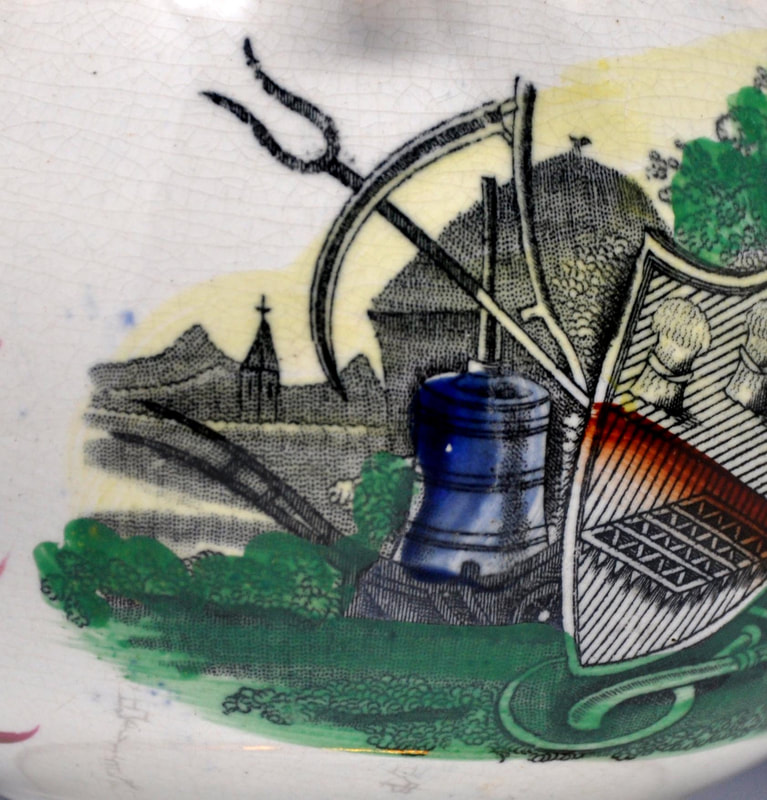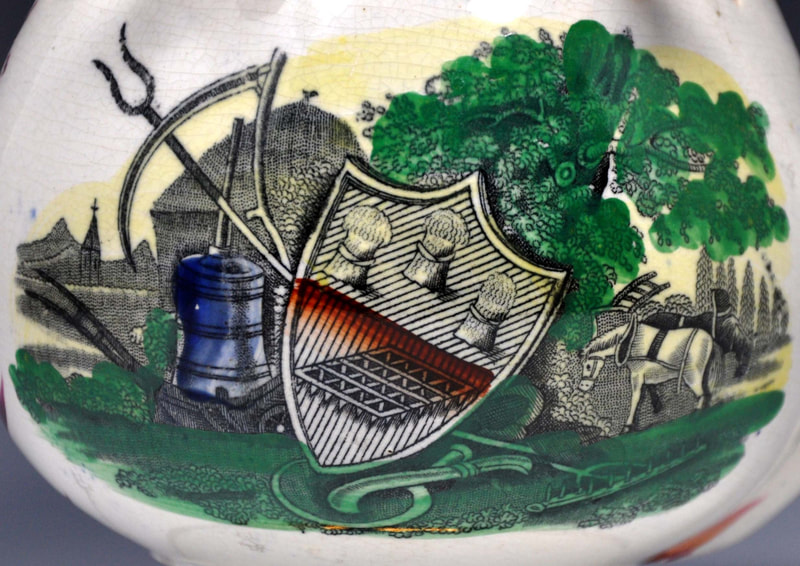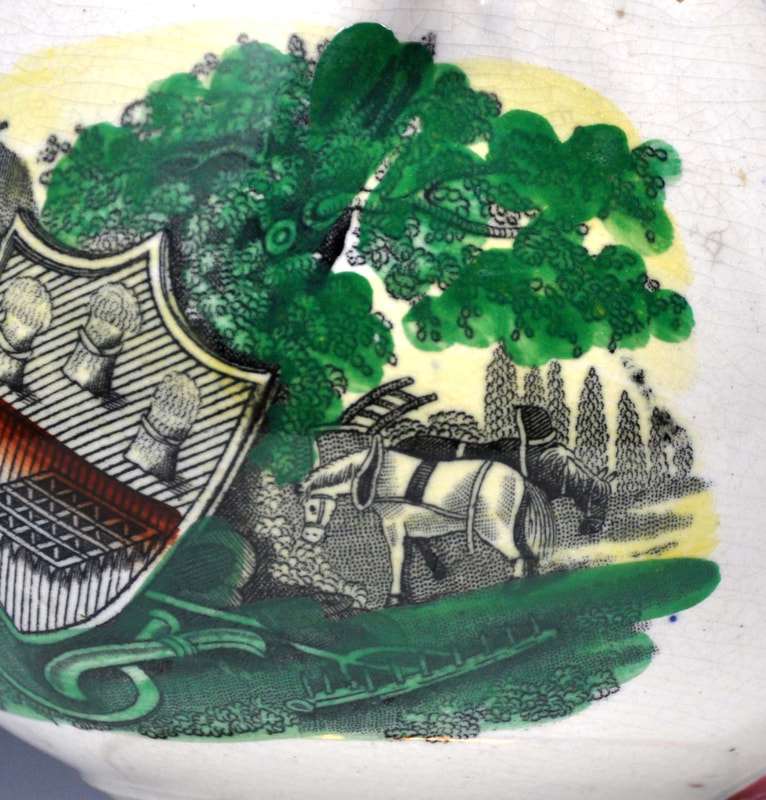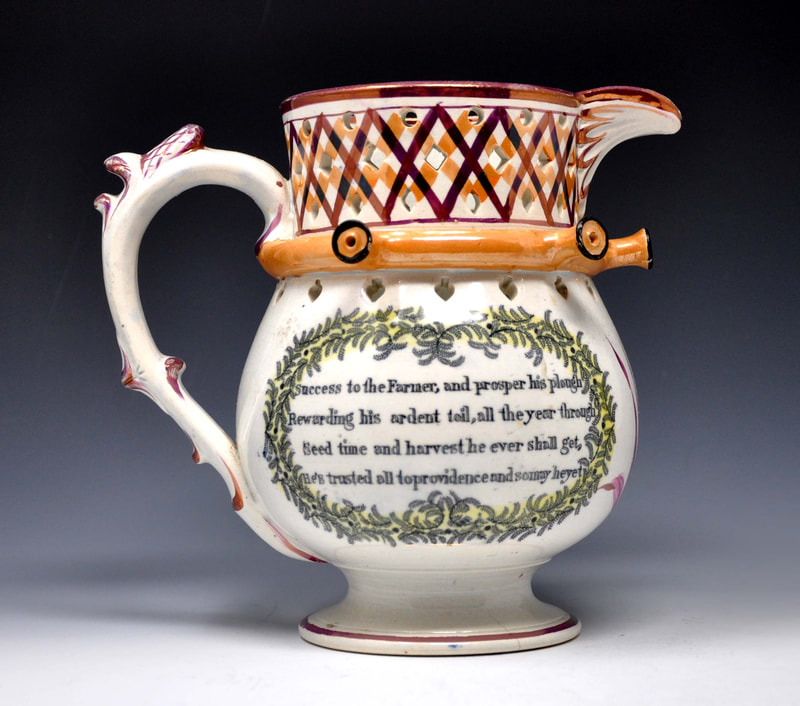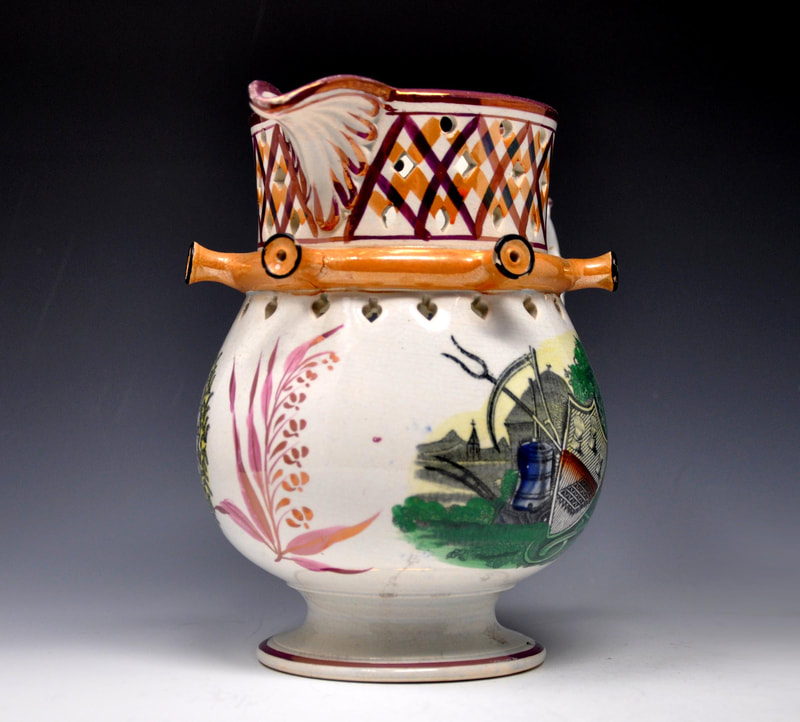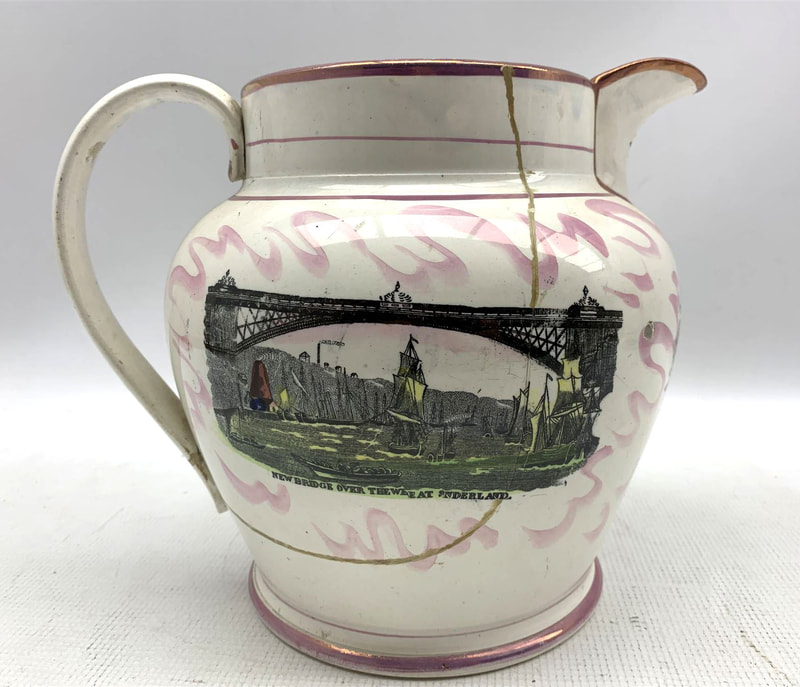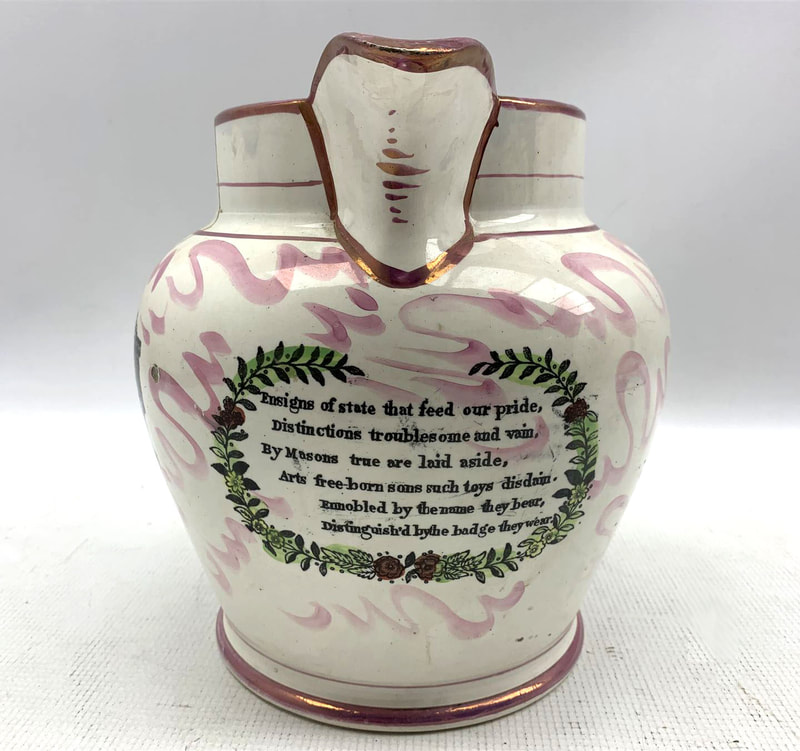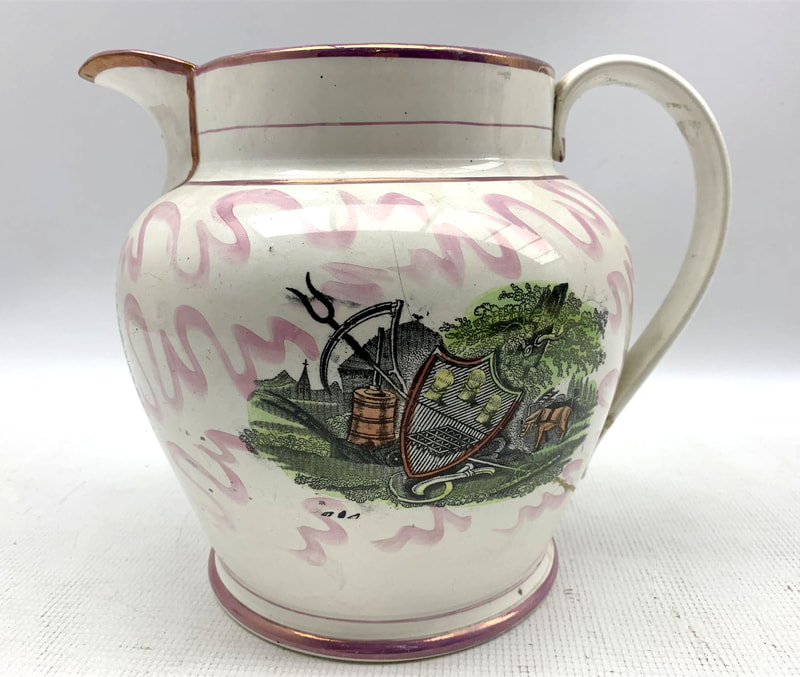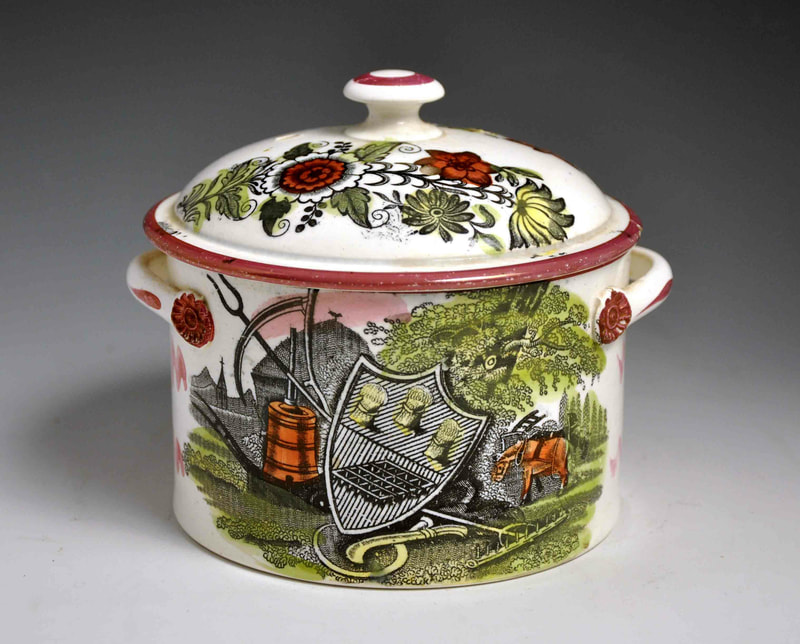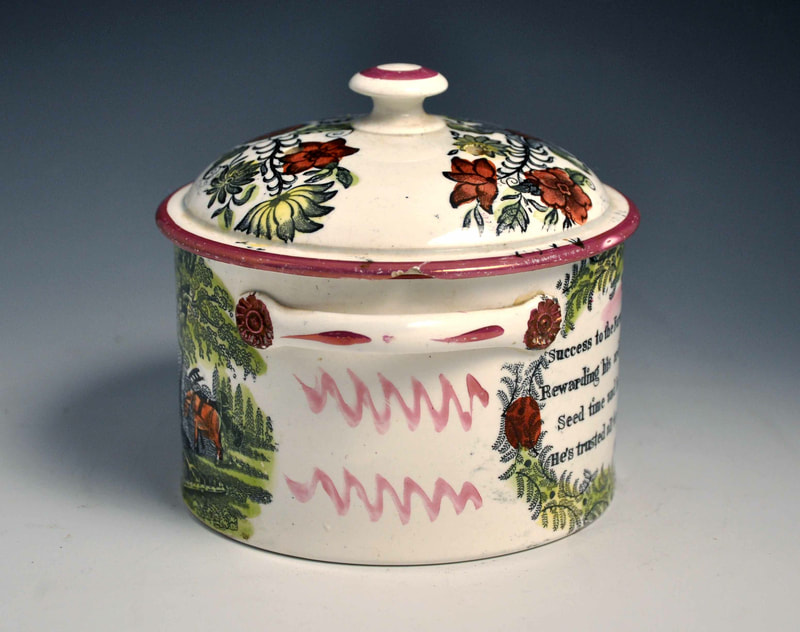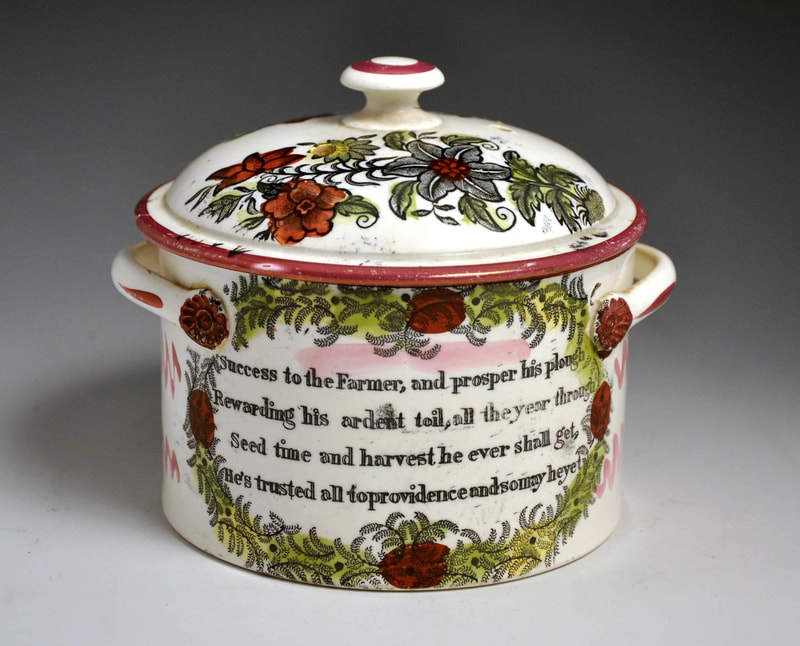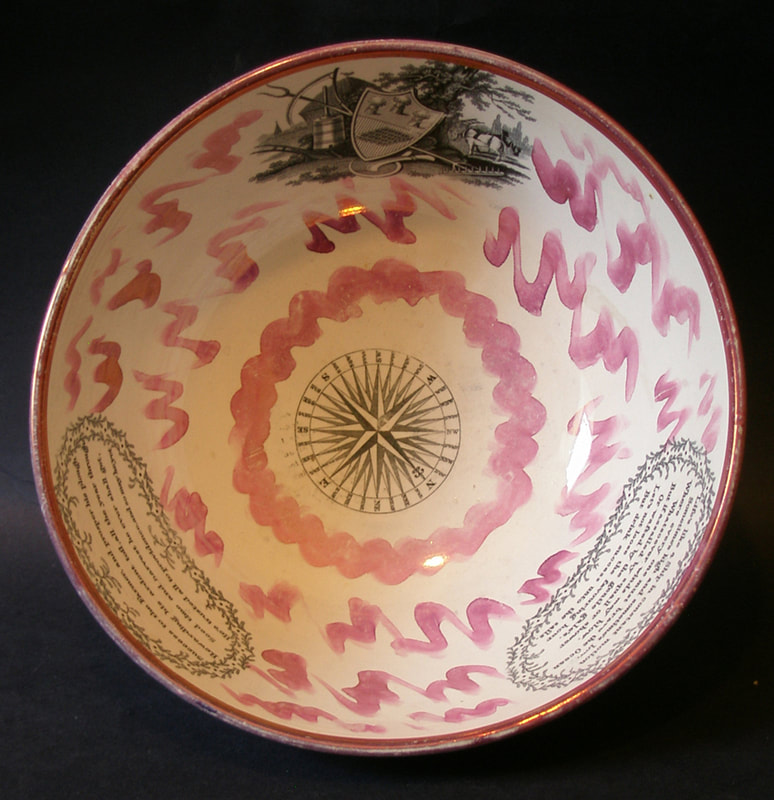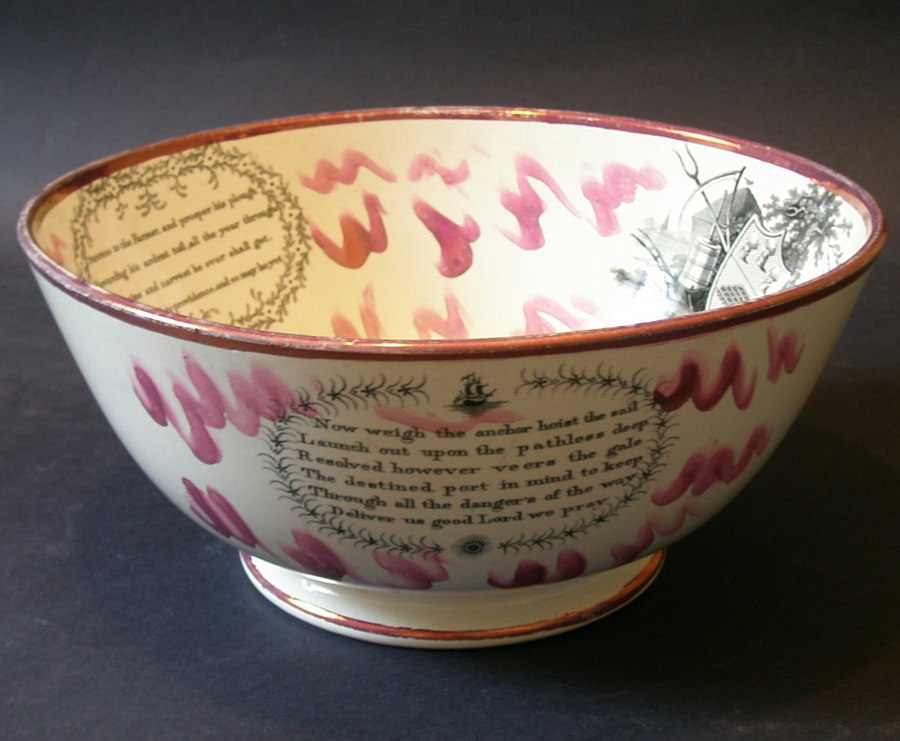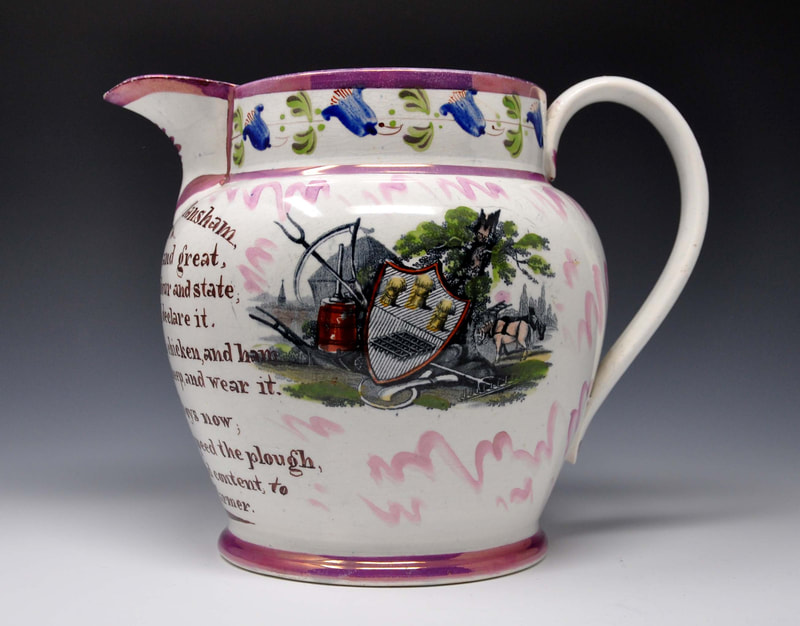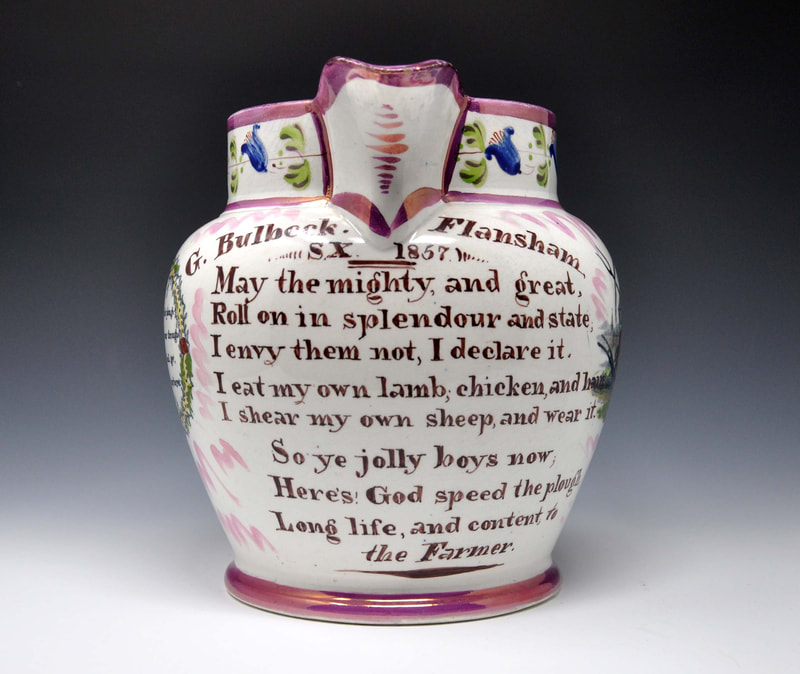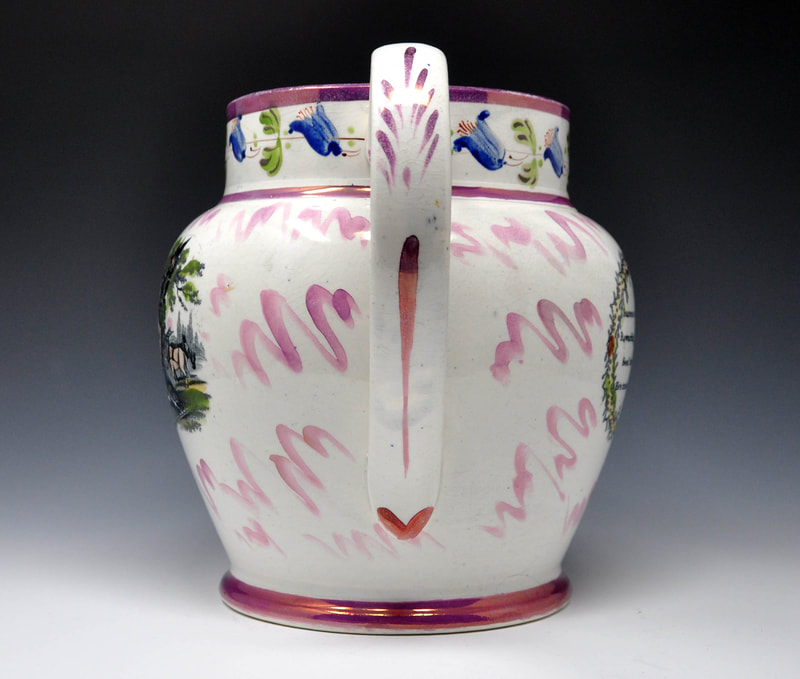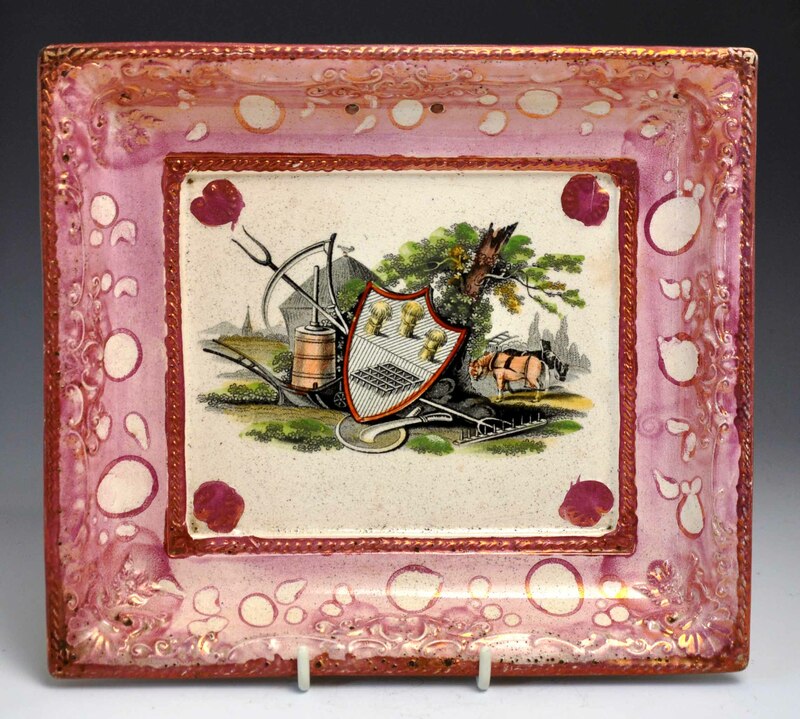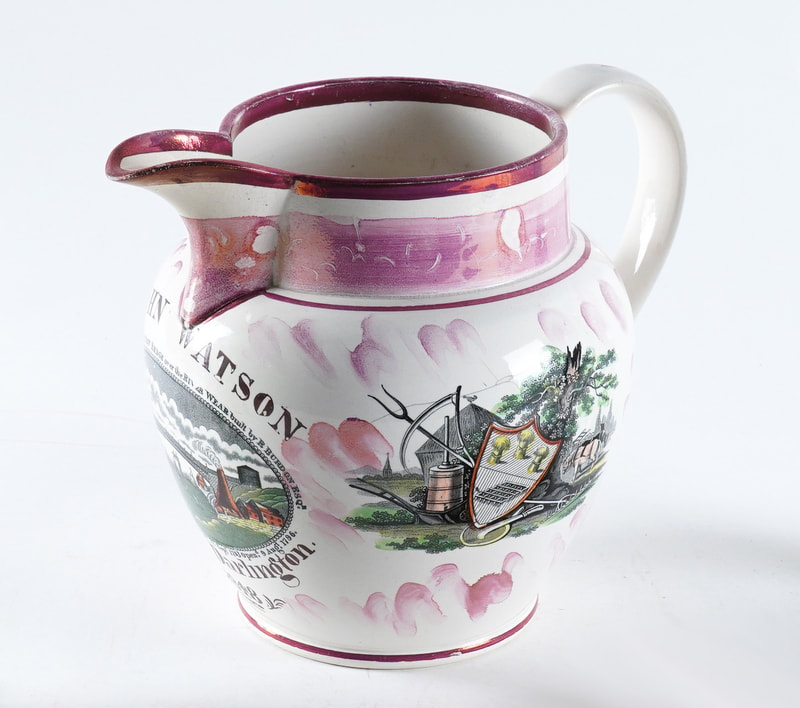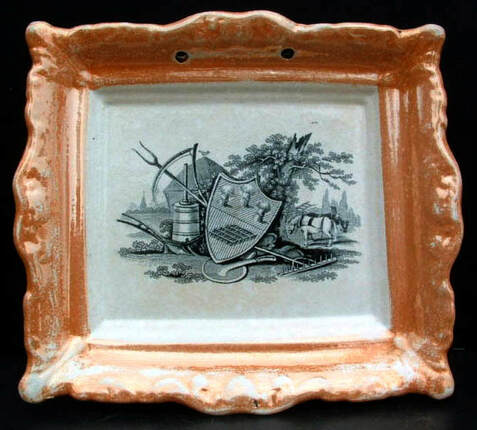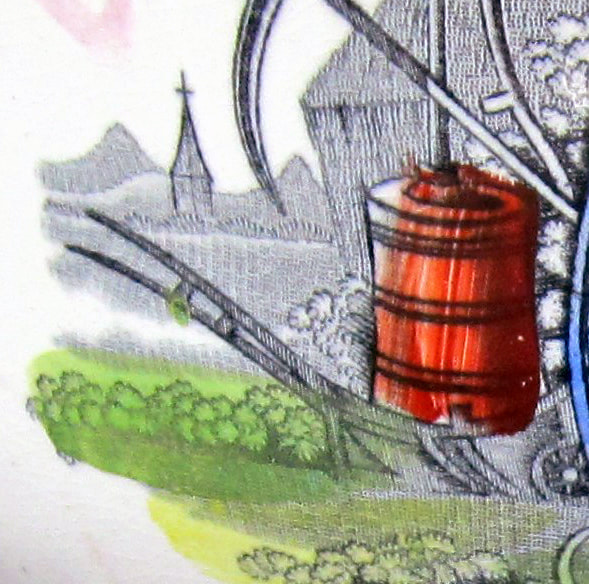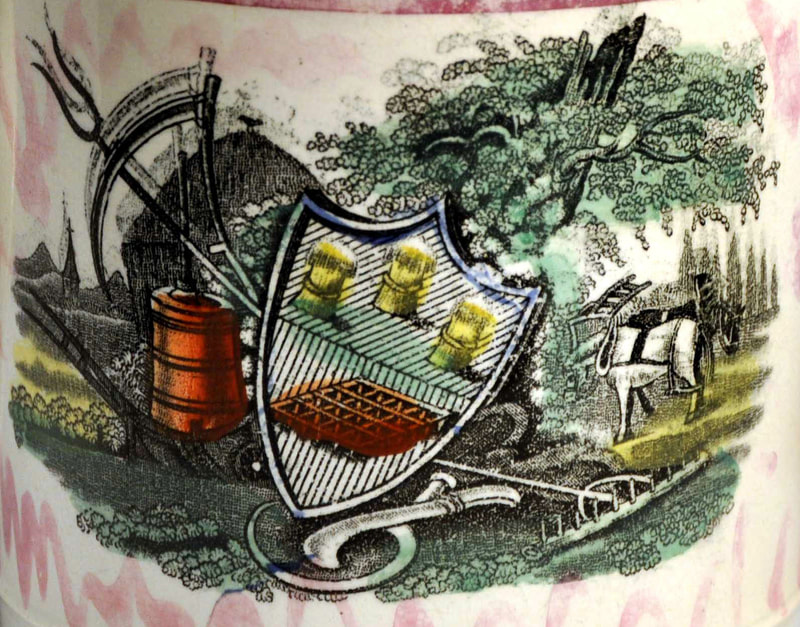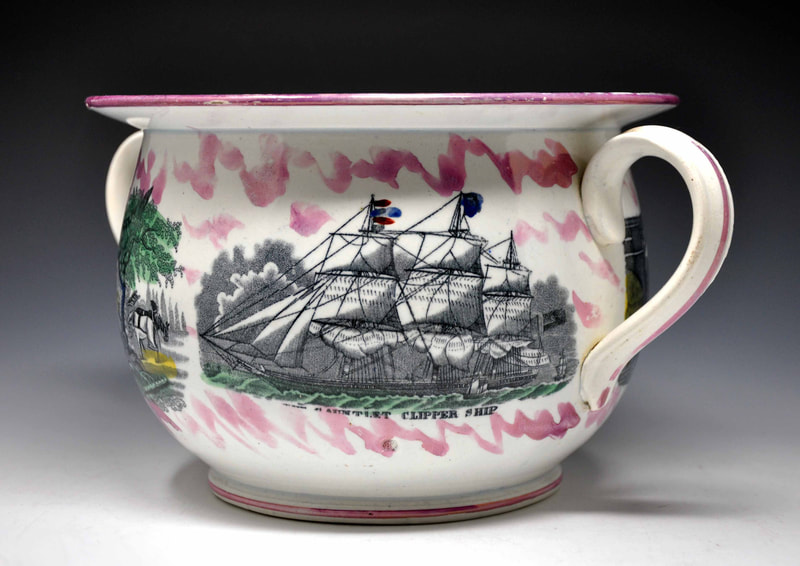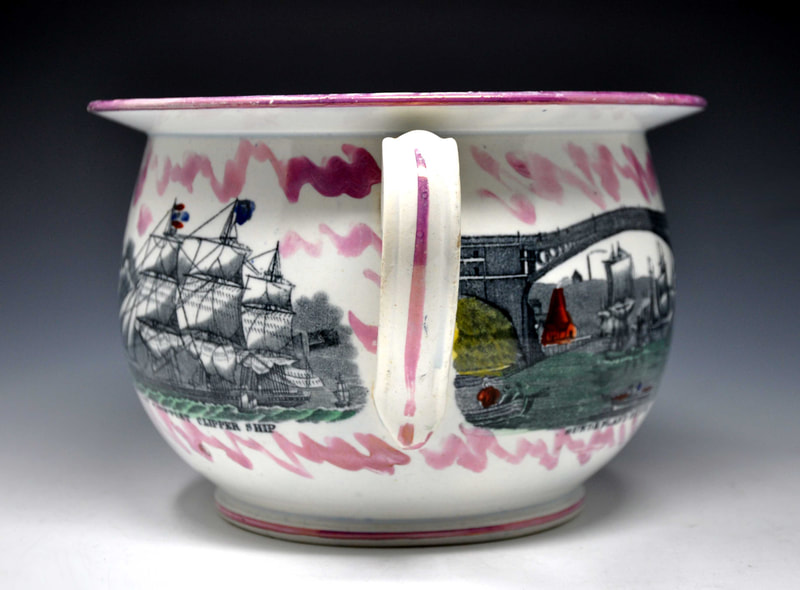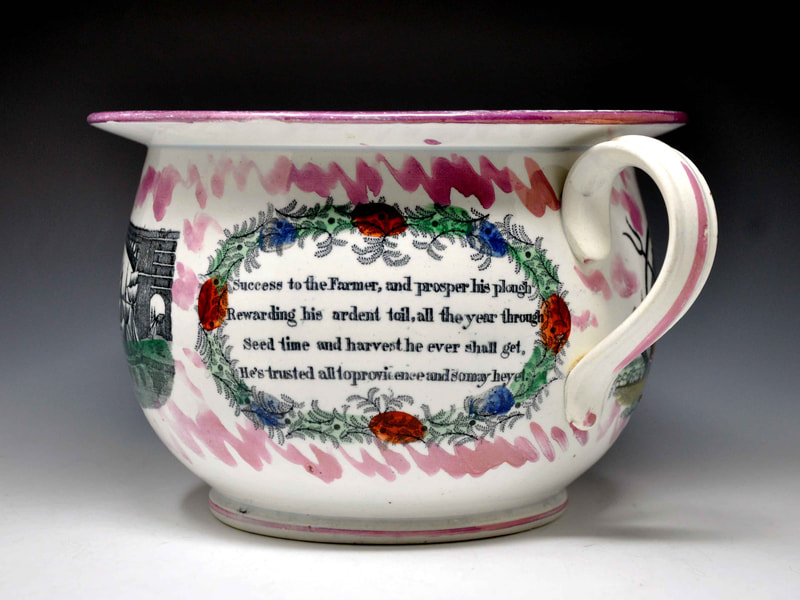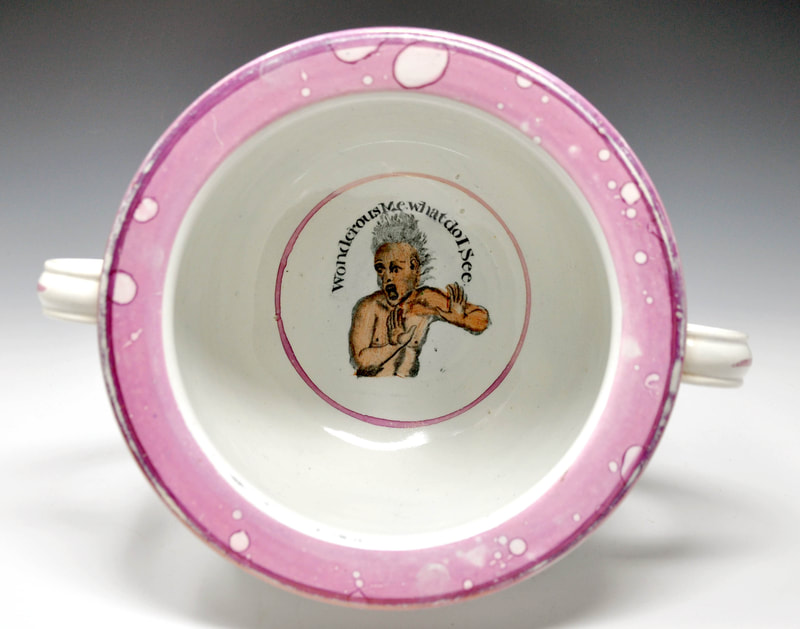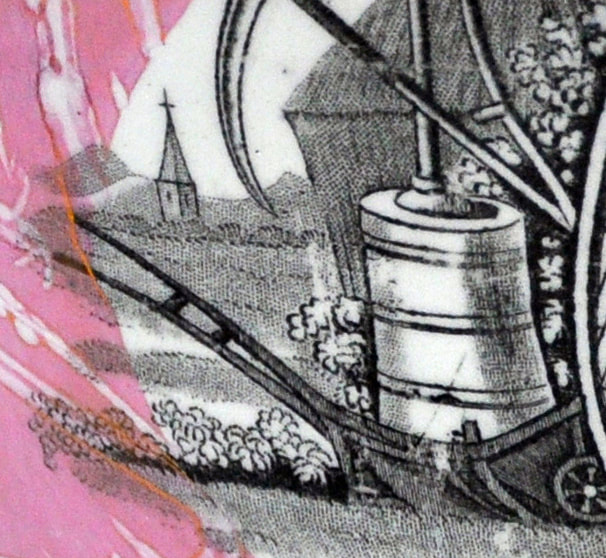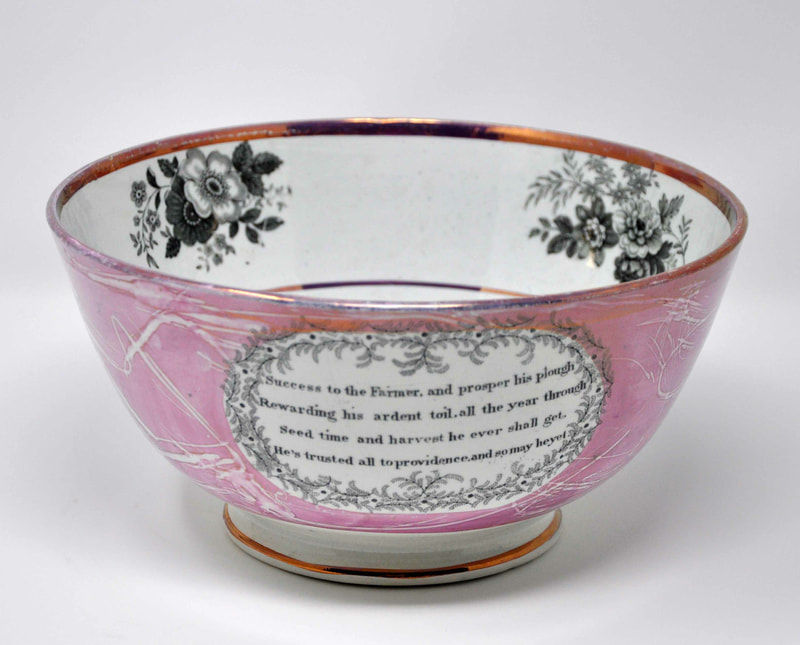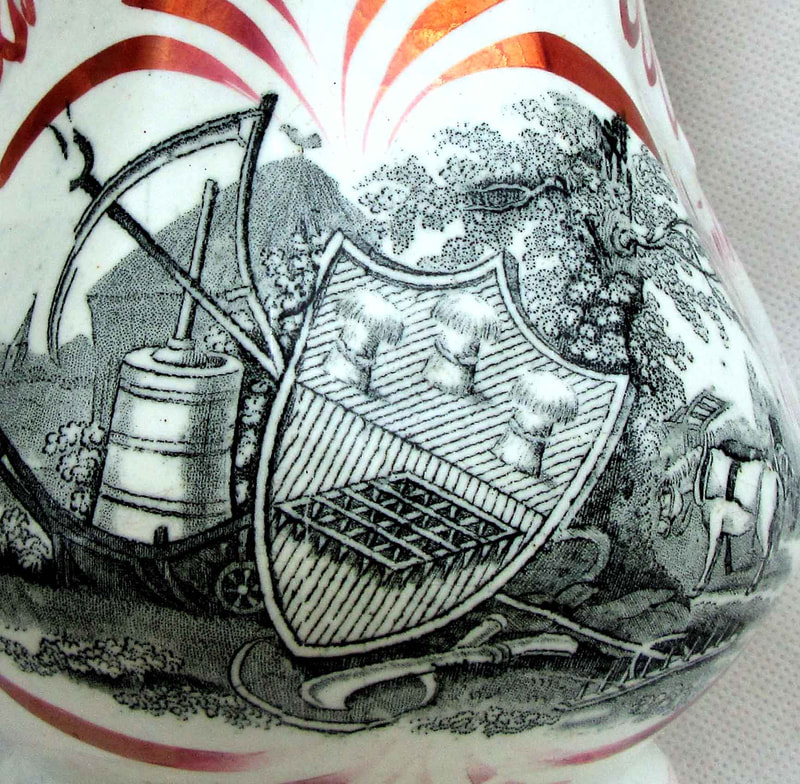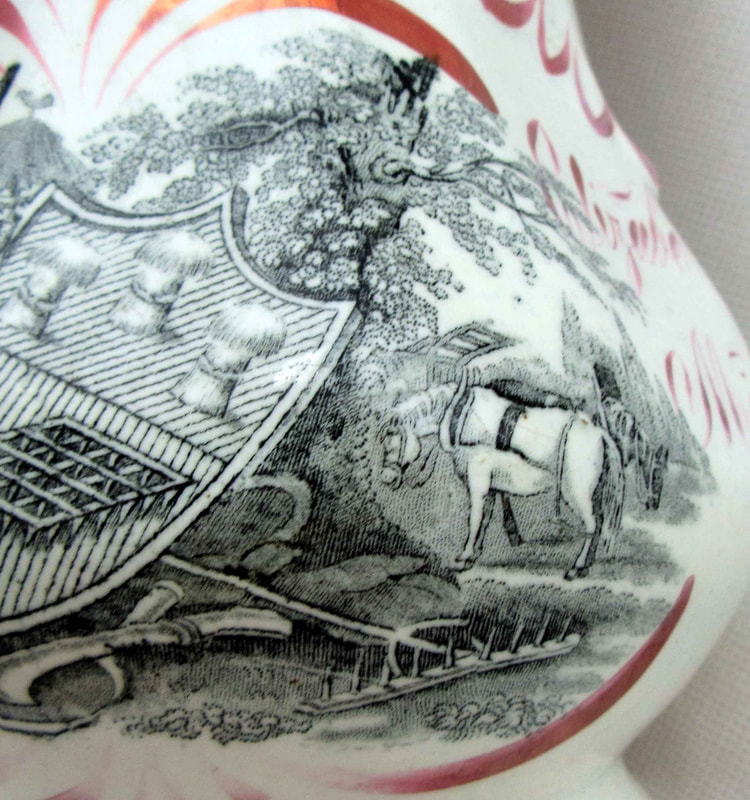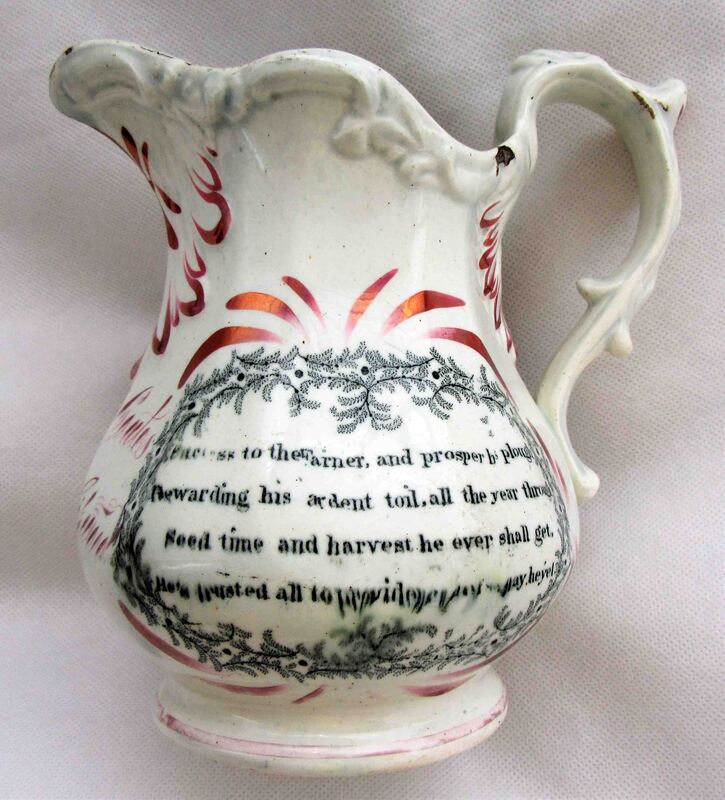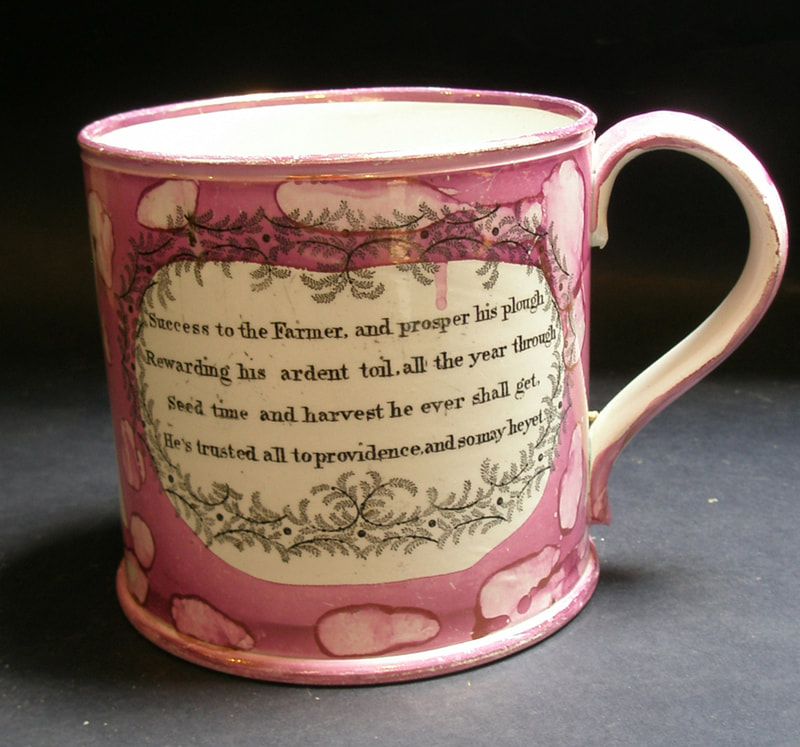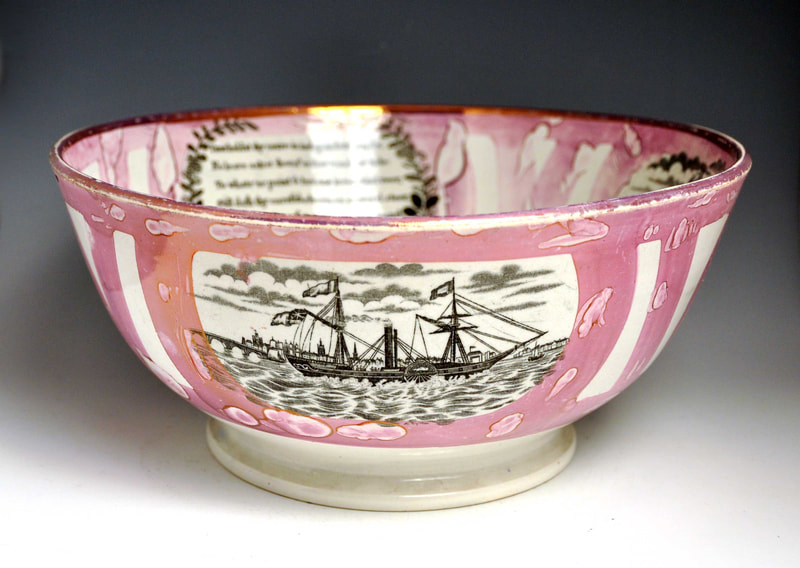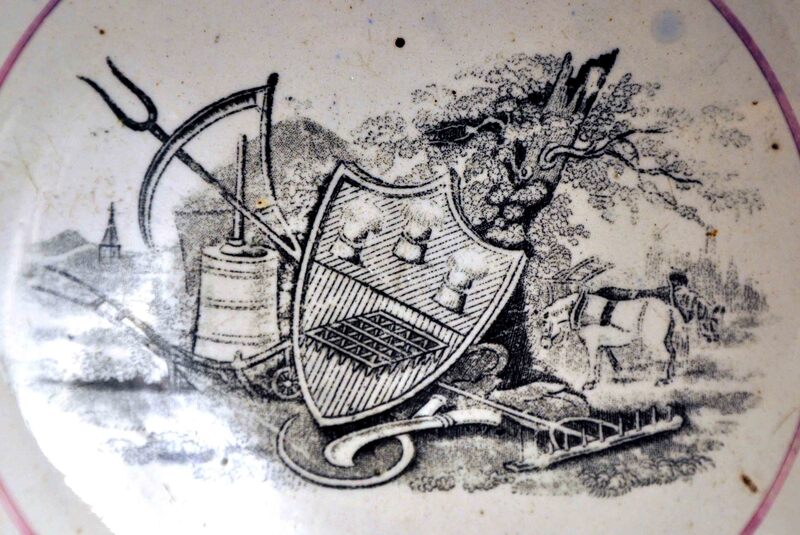Farmers' Arms – Sunderland
Dixon, Phillips & Co, Garrison Pottery
A rare puzzle jug, from the early 1860s, with the transfer. This is the only orange lustre item I have seen produced by the Garrison Pottery, which closed in 1865. The flower lustre decoration under the spout is found on Dixon (Garrison) items from the 1850s. Also, the decoration of the handle. This appears to be the version of the Farmers' Arms transfer on the copper plate in the Sunderland Museum & Winter Gardens, Tyne & Wear Archives & Museums collection, donated by the Ball family.
Scott's Southwick Pottery – 1
Like the Dixon puzzle jug above, this appears to be the version of the Farmers' Arms transfer on the copper plate in the Sunderland Museum & Winter Gardens, Tyne & Wear Archives & Museums collection, donated by the Ball family. The transfer plate appears to have been acquired by Scott's Southwick Pottery from Dixon when the Garrison Pottery closed in 1865 and re-engraved in places. It was later acquired by Ball's Deptford Pottery, although I am yet to record an example from that pottery with this version of the transfer. You can read more here.
Below, a washbowl with the Scott impress and the Farmers' Arms with other transfers from the copper plate in the Sunderland Museum.
I had thought the transfer with two soldiers was unique to Dixon's, but the wavy lustre decoration is typical of Scott's, as is the decoration to the collar and spout. So this Crimean copper transfer plate must also have been acquired by that pottery when the Garrison Pottery closed.
An eel pot, c1855 (NB similar flower-decorated pots are found with the 'Crimea' transfer), with the same version of the transfer.
Scott's Southwick Pottery – 2
Very similar to the 'plate 3' transfer below, but note the shading on the knife handle in the foreground (top right detail).
An exceptionally well decorated jug below with the inscribed date, 1857. The bluebell decoration around the collar is reminiscent of Scott's jugs from the 1830s.
Below an eel pot or butter dish (lid missing) with the transfer.
Scott's Southwick Pottery – 3
Again, the easiest way to tell this transfer apart is the shading on the handle of the knife in the foreground.
Below, a jug with an inscription for 1848.
Ball's Deptford Pottery
This later, orange-bordered plaque, from the last quarter of the 19th century, appears to be from the same transfer plate as the plaque above.
Moore's Wear Pottery
A bowl with a indistinct Moore impress, c1860.
Below, an over-sized mug with the transfer, and typical Moore zig-zag lustre decoration.
The cross on the church is less pronounced on the imprint on the chamber pot below.
A typical Moore's chamber pot from c1860 with very similar enamels to the mug above. NB these potties appear with transfers of the old Sunderland Bridge, like this one, and the New Bridge which opened in 1859.
Farmers' Arms – Tyneside
Attributed to Robert Maling, Ouseburn Bridge Pottery, Newcastle
See the 'Life's a ship...' page for details of this attribution. The bowl is finely potted and was likely made in the 1840s.
Below, a jug with a hand-painted inscription.
The script and the lustre decoration on the handle are very distinctive. See Life's like a ship, for a mug with this script and handle decoration dated 1857.
The mug below appears to be from the same transfer plate as the items above. Although, Ian Sharp attributes it to Thomas Fell, again from the 1840s.
This bowl appears to come from the same plate as those above. The transfer is worn so hard to compare.
